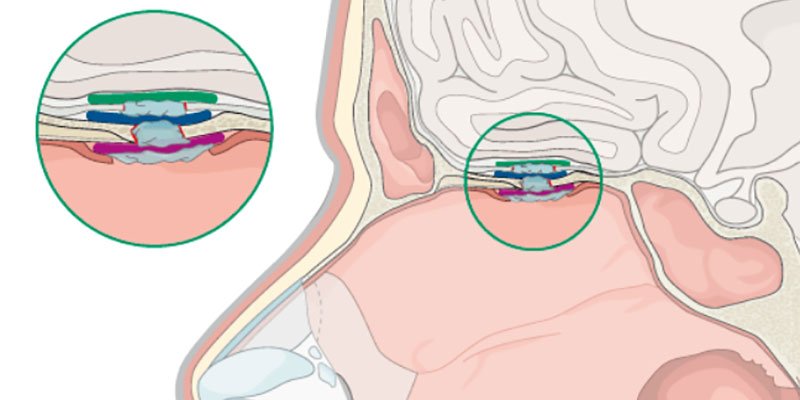
CSF Leak Repair
What are the symptoms of CSF leak?
Patients typically complain of clear, watery drainage usually from only one side of the nose or one ear. Drainage can increase with tilting the head forward or straining. Other symptoms can include headache, vision changes, and hearing loss.
CSF leaks can be separated into two groups. Spontaneous leaks occur without any known cause. Traumatic leaks are most commonly related to a history of head injury, surgery, or tumors.
How are CSF leaks diagnosed?
Your doctor will perform a history and physical exam. Often, the doctor will examine the nose with an endoscope. Your physician may also ask you to lean forward for several minutes to see if this increases drainage. If the drainage can be collected, it is often sent for laboratory testing to confirm that it is cerebral spinal fluid. Imaging studies such as CT scans or MRIs may be ordered to evaluate for skull bone defects.
What is the treatment for a CSF leak?
Treatment can be either medical or surgical. Conservative treatment is usually recommended first in cases of spontaneous CSF leak or head trauma. This includes 1-2 weeks of bed rest. Patients are encouraged to avoid coughing, sneezing, and heavy lifting. Straining is avoided by taking stool softeners. A lumbar drain may also be placed in the low back to decrease pressure of the CSF fluid around the area of the leak. This often allows this area to heal.
Surgical treatment of CSF leaks is used when conservative treatment fails. The approach can be either through an external incision or endoscopic. During surgery, graft material is placed to close the hole in the skull base. There are several types of graft material available, including tissue taken from other areas of the body or synthetic material. Nasal packing is often placed at the end of the case. This is usually removed post-operatively after one week.
Cerebral spinal fluid leak results when the fluid around the brain (called cerebral spinal fluid) leaks through a hole through the skull bone. This fluid can either drain from the ear or the nose, depending on where the skull bone is damaged.